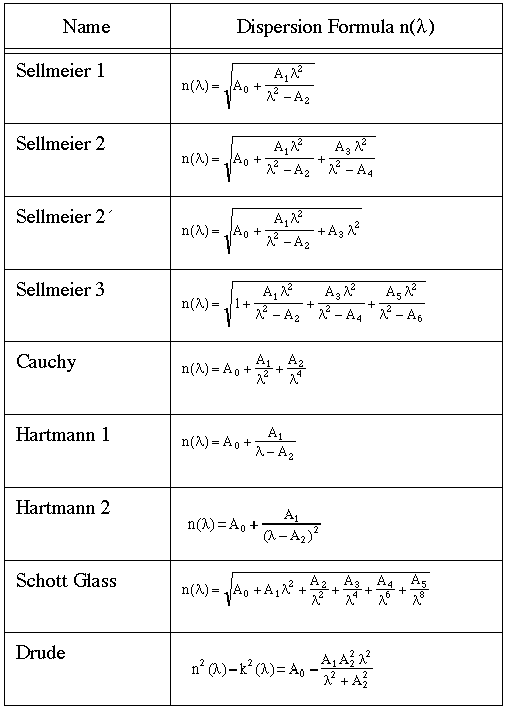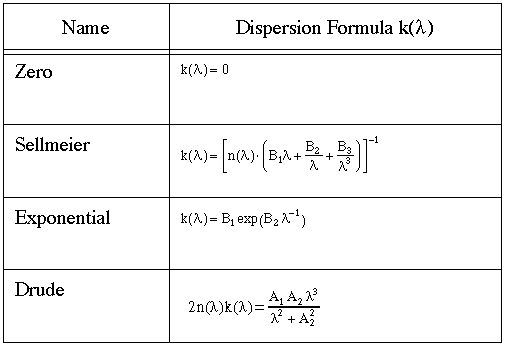Focus on: Determining Refractive Index
(N and K)
- using a variable material. In this case, it is assumed that the index is
constant over a wavelength range. One (or more) layers in the coating design
can be designated as a variable material -- a material whose index can be changed
during optimization. The measurements (reflectance, transmission, ellipsometric)
are entered as optimization targets. Then optimization is used to find the
index and thickness of the variable index layers.
- fitting a dispersion formula. In this case, the index is assumed to follow a formula containing a few parameters. It is assumed that measurements are of a single layer coated on a substrate. Up to three files of measurements (R and/or T) can be used. TFCalc solves a nonlinear least-squares problem to determine the parameters in the dispersion formula. The user can (1) select which parameters should be optimized and (2) constrain the values of the parameters. Here are the dispersion formulas that are available for N:


TFCalc can now be used to determine the index of a substrate from reflectance and transmittance measurements. The thickness of the substrate must be known. Previously, TFCalc could determine the index of a thin film layer on a known substrate.